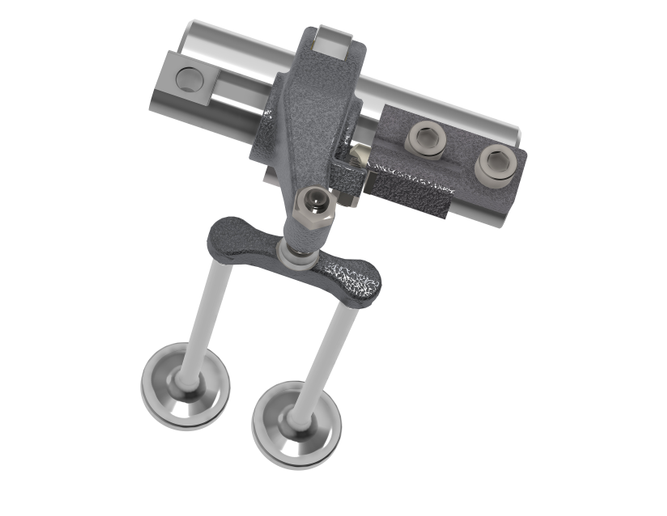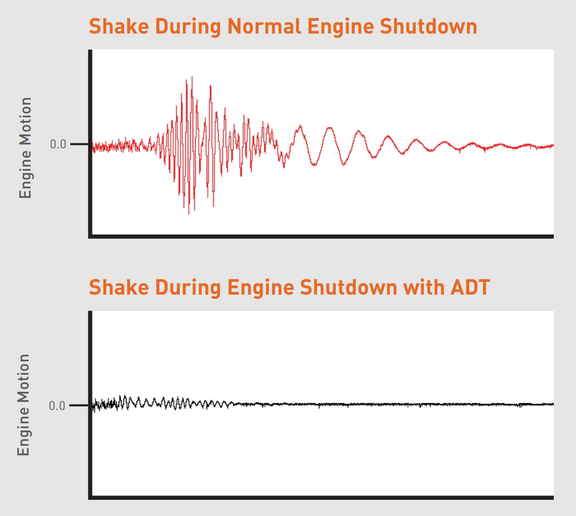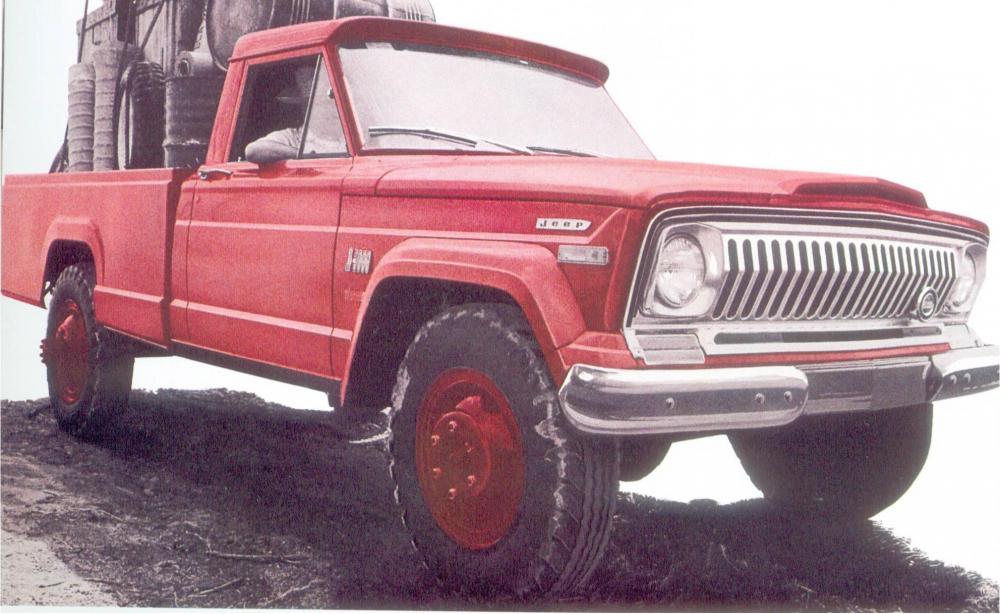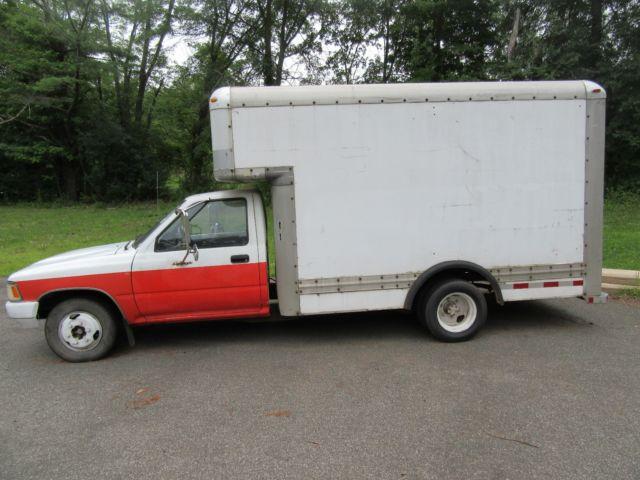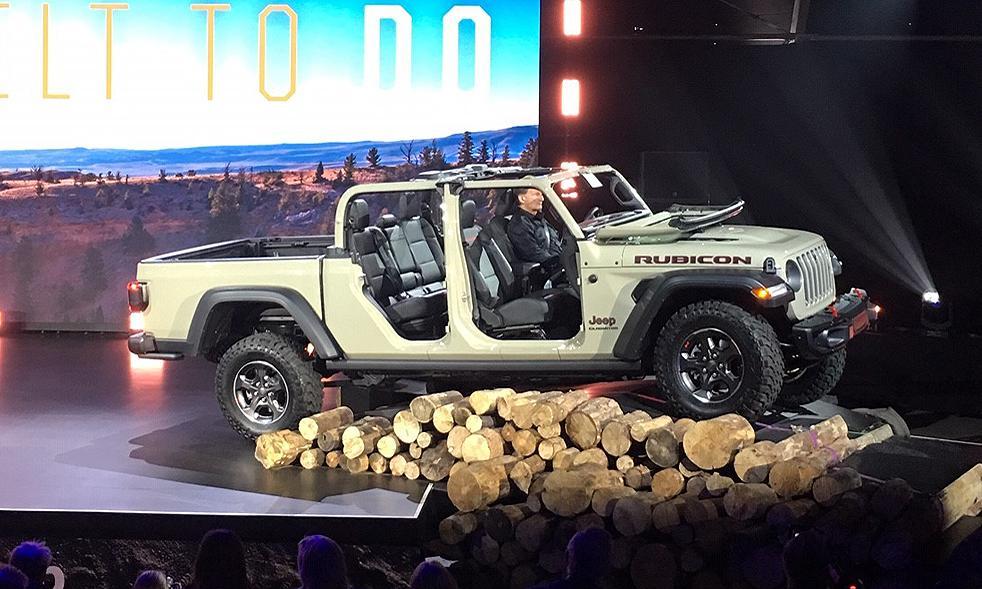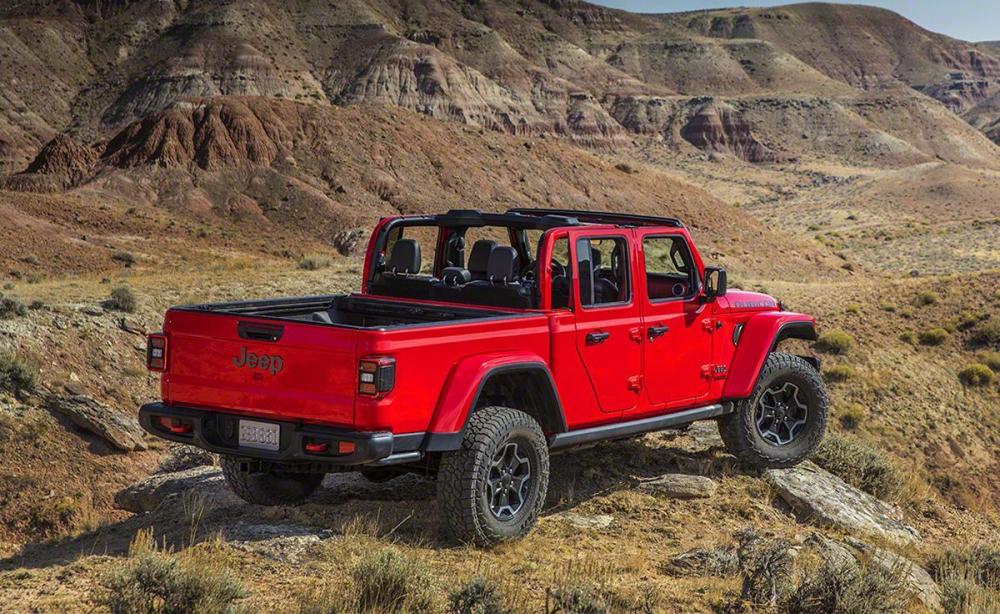
kscarbel2
Moderator-
Posts
18,882 -
Joined
-
Days Won
114
Content Type
Profiles
Forums
Gallery
Events
Blogs
BMT Wiki
Collections
Store
Everything posted by kscarbel2
-
Heavy Duty Trucking (HDT) / November 28, 2018 Jacobs Vehicle Systems has introduced Active Decompression Technology (ADT), which the company says enables heavy-duty commercial vehicles to benefit from an engine stop-start system and eliminating engine-shake at both start-up and shutdown. In addition to improving fuel economy and reducing emissions, ADT also improves cold engine starts, reduces loading and wear on engine components during start-up, and makes start-up faster, according to Jacobs. Jacobs says the new ADT device incorporates valve actuation technologies proven over many millions of miles and can be cost-effectively added to many engine platforms. Stop-start engine technology, which automatically switches off the engine when it would otherwise be idling, is widely adopted by automotive manufacturers, however, it is less common in heavy-duty commercial vehicles. This is largely due to the intrusive engine and cabin-shake experienced whenever a heavy-duty diesel engine starts or stops, and because of the cost of technologies needed to mitigate increased wear-and-tear on the starter motor, ring-gear, and battery. ADT significantly reduces these issues. Extensive testing has shown that ADT reduces the magnitude of engine-shake during shutdown by 90%, which is when vibrations transmitted to the cabin are of greatest frequency and strength. This has the additional benefit of preventing disturbance to drivers sleeping in cabs overnight when there are automated engine starts and stops to maintain battery charge. The ADT device is automatically activated by the engine control unit (ECU) whenever the engine shuts down or starts up, and works by keeping the engine valves open and the cylinders decompressed. When switching off the engine, it “coasts” to a smooth shutdown without causing the cab to shake. When starting up, the engine is kept in a decompressed state which decreases cranking torque by 40% and allows the engine to spin up to twice its normal speed for smoother starting, faster priming of the fuel system, and decreased wear on the starter gear, fly wheel and other components. This can also allow the use of smaller and lighter batteries, cables, and starter. By enabling the engine to be turned-over while decompressed, ADT also improves start-ups in cold temperatures by enabling the engine to reach its critical compression ignition speeds. When combined with supplemental air inlet heaters, ADT also enables the engine cylinders to be pre-warmed without the engine load from compression; especially useful when freezing temperatures have reduced battery levels. When high cranking speed is reached, the engine compression is reactivated and cylinder-fueling begins. “ADT is another development of Jacobs’ well-proven valve actuation technologies to deliver another set of benefits,” said Steve Ernest, vice president of engineering and business development at Jacobs Vehicle Systems. “Some OEMs will be interested in ADT because it enhances vehicle refinement by eliminating engine-shake and cabin-shake. Other customers – particularly those whose vehicles endure heavy stop-start cycles - will welcome the reduced component load, fuel economy and emissions advantages.” . .
-
The learning never ends. I had no idea that VAM, Jeep's licensee in Mexico, produced this troop carrier which placed the front of a CJ5 atop a J4000 chassis with its pickup bed......the J3M. .
-
Note the heavy-duty front rims on this Mexican production J-series, and the locally-produced rear bed. .
-
Hino Enters Heavy Duty Market with XL Series Truck
kscarbel2 replied to kscarbel2's topic in Trucking News
Of course Toyota used to offer a 1-ton cab & chassis in the US market with either single or dual tire configuration, and it sold very well. Penske Leasing ran thousands. . -
Isn't that a J20 Paul? I didn't think they built a 1-ton in 1981. I'd like to acquire a clean M715.
-
You said Peterbilt 388.....that's a highway truck chassis. You'd need a 367.
-
GM's Ammann vacates president role to lead AV unit Michael Wayland, Automotive News / November 29, 2018 General Motors President Dan Ammann will step down from his role to become CEO of the automaker's Cruise autonomous vehicle unit. The move -- effective Jan. 1 -- emphasizes the importance of the operations to the future of GM, which plans to launch a public self-driving ride-hailing fleet in 2019. It also places Ammann, a former Wall Street banker who joined GM as its treasurer in 2010, to potentially lead a spin-off and initial public offering of Cruise, which analysts have speculated is eventually coming. A successor for Ammann, 46, will not be named. GM CEO Mary Barra, 56, will absorb his responsibilities over global regions and GM Financial, while CFO Dhivya Suryadevara, 39, takes responsibility of the automaker's corporate development, the automaker said today. Cruise's current CEO and co-founder, Kyle Vogt, will become president and chief technology officer of the operations. Ammann and Vogt will "set the strategic direction" for Cruise. Ammann on Thursday described it as a "partnership" with Vogt leading technical side of the business and Ammann focusing on "commercialization and other scaling from a corporate point of view." Ammann, who will be based in San Francisco, declined to comment on the possibility of a spinoff or IPO. "All the energy right now is focused on getting to the point of initial commercial deployment," Ammann told Automotive News, later saying the company could be "open-minded to other opportunities down the road." Bloomberg reported earlier this year that GM was talking with banks and internally about its eventual options for Cruise, including a public offering, spinoff or separate stock listing. Ammann said he is "thrilled" to be dedicating 100 percent of his time and energy to Cruise, which is currently valued at $14.6 billion following recent investments. “It’s our belief that this technology will only have the impact that we want it to have on the world if it’s deployed at massive scale,” Ammann said. “So, we need to be preparing for that as we continue the technology as we prepare initial commercialization.” Spearheaded by Ammann, GM acquired San Francisco-based Cruise Automation in 2016. He has since overseen its expansion from 40 employees to more than 1,000 at the GM subsidiary. “Dan’s talents, I think, would have been underutilized if he was the CEO when there was just 40 people at the company,” Vogt said on Thursday. “To me, it’s sort of the sweet spot where the skills that Dan has will really complement what we have on our leadership team today and take it to the next level. I think the timing is pretty good.” Ammann relinquished other roles as president, including leading Cadillac and global portfolio planning, to GM product chief Mark Reuss in June. The changes follow several major announcements in recent months about GM's autonomous work, including a $2.25 billion investment by the SoftBank Vision Fund of Japan and plans for Honda Motor Co. to invest $2.75 billion in the operations. "These appointments further demonstrate our commitment to transforming mobility through the safe deployment of self-driving technology and move us closer to our vision for a future with zero crashes, zero emissions and zero congestion," Barra said in a Thursday statement. "As we move toward commercial deployment, adding Dan to the strong team led by Kyle is the next step." The announcement also comes three days after Barra and Suryadevara announced a major restructuring of the company's North American production operations and plans to cut 15 percent of the automaker's salaried workforce, including 25 percent of its global executives. Those actions were in part driven by GM’s plans to devote more resources to emerging technologies such as self-driving and autonomous vehicles.
-
Fitzgerald's website doesn't show a Peterbilt 300 series vocational model offering (e.g. 367)...................https://www.fitzgeraldgliderkits.com/peterbilt/ However they do offer the Kenworth T800...........https://www.fitzgeraldgliderkits.com/kenworth/kenworth-t800/ As well as the Western Star 4900SB.................https://www.fitzgeraldgliderkits.com/western-star/western-star-4900-sb/ I would buy as many Fitzgerald Series 60-powered T800s as you can afford, before the government brings their business to a halt. This is a truck....an engine.... that you can make a living with.
-
Unfamiliar with the word, I googled and saw "snarky" means sharply critical or snide...........https://www.google.com/search?source=hp&ei=vzIAXMuLEIK45gK67I-oCg&q=snarky&btnK=Google+Search&oq=snarky&gs_l=psy-ab.3..0i131j0j0i131j0l7.2402.5868..6671...2.0..0.78.517.8......0....1..gws-wiz.....0..0i10.lCm0qm33rzg Personally speaking, your comments here did not come across to me this way. I welcome your comments, which clearly are based on in-depth industry knowledge and experience.
-
Is Fitzgerald doing any vocational models? With the superior Series 60, that would be one good way to go.
-
I can't answer your question. However, I'd like to know how I start out attempting to post a interesting thread on Jeep pickups......and end up with one BMT member focused on bashing another member? Where'd that come from? That was never my intent in posting about Jeep pickups. I have a personal interest in Jeep's pickup heritage, then and now, and thought some other BMT members might share my interest. C'mon man, we're all better than that......you're better than that. We're all a little different.....the world would be an awful dull place if we were all the same. And if we can't get along, the BMT family, in this otherwise dysfunctional world, then what's left???
-
Judge orders new talks in FCA, U.S. case over diesel emissions David Shepardson, Reuters / November 28, 2018 WASHINGTON -- A federal judge in San Francisco on Wednesday ordered the Justice Department and Fiat Chrysler Automobiles NV to hold new talks with a court-appointed settlement master to try to settle the government's civil suit over the Italian-American automaker's diesel vehicle emissions. The Justice Department is seeking "substantial" civil fines from Fiat Chrysler in a suit filed in May 2017 accusing the company of illegally using software that led to excess emissions in 104,000 U.S. diesel vehicles sold since 2014. A person briefed on the matter said the government and Fiat Chrysler have reached agreement on almost all aspects of a settlement after months of lengthy talks but remain "hundreds of millions of dollars" apart on how big the fines will be. In a written order, Judge Edward Chen directed both sides to "fully cooperate and communicate" with settlement master Ken Feinberg "in light of the delay in resolving the United States’ case." Feinberg was ordered "to engage directly with the parties and employ his best effort in facilitating settlement negotiations, including terms of any monetary relief." Feinberg has scheduled a new round of talks with all sides for Dec. 3 in Washington, the person briefed on the matter said. Feinberg declined to comment, saying Chen's order speaks for itself. Fiat Chrysler had no immediate comment. U.S. and California regulators stepped up scrutiny of diesel vehicles after Volkswagen AG admitted in 2015 to illegally installing software in U.S. vehicles for years to evade emissions standards. VW has agreed to pay more than $25 billion in the United States for claims from owners, environmental regulators, states and dealers. Regulators have said Fiat Chrysler diesel vehicles had undisclosed emissions controls that allowed vehicles to emit excess pollution during normal driving. The company has denied any wrongdoing and said there was never an attempt to create software to cheat emissions rules. Last month, the company set aside 713 million euros ($810 million) to cover potential costs related to the case. Reuters reported in February that a settlement offer sent to Fiat Chrysler lawyers by the Justice Department on Jan. 27 would require the company to offset excess pollution and take steps to prevent future excess emissions. The letter included language that a settlement must include very substantial civil penalties. The Justice Department has a separate ongoing criminal investigation into the excess emissions.
-
The irony is, just as Chinese consumers prefer to buy an Audi, BMW or Mercedes-Benz that was made in Germany, versus a China domestic joint-venture plant, they would also prefer a Lincoln with the "Made in USA" decal. Though China production quality is equal to the US, that "Made in China" decal lets half the air out of Ford's sales marketing balloon.
-
Ford seeks to skirt tariffs by speeding China-built Lincoln plan Keith Naughton, Bloomberg / November 28, 2018 Ford Motor Co., banking on China to revive its long-lagging Lincoln brand, is trying to accelerate plans to begin building its luxury models there and avoid profit-sapping tariffs brought about by President Donald Trump’s trade war. Ford, which had planned to start production of Lincoln models in China in late 2019 with a local partner, is trying to move that timing up, even if slightly, to help overcome tariffs China has imposed in retaliation to levies by the Trump administration. “What we want to do is accelerate that,” Joy Falotico, head of Lincoln and Ford’s chief marketing officer, said in an interview. “We will look for opportunities, but it’s a big undertaking and I think it won’t be a significant change in our plans.” Even a small move would help Lincoln, which lacks the local production most of its competitors have in China. Prices have soared as a result of the 40 percent tariffs the country has put on U.S.-built vehicles. Ford is absorbing some of those costs, but Lincoln’s sales have still slowed to a crawl. Falotico spoke ahead of the unveiling of the three-row Aviator at the Los Angeles Auto Show on Wednesday. The model -- one of three SUVs Lincoln is launching in China -- will go on sale in the second half of next year in the country, as well as in the U.S. Ford CEO Jim Hackett has said Trump’s metals tariffs will cost the automaker about $1 billion in annual profit. In August, the company scrapped a plan to export a new model called Focus Active from China into the U.S. Several of the automaker’s top executives have called for Trump to resolve its trade dispute with China. Tariff headwinds Lincoln is also reconsidering plans to export Chinese-built models back to the U.S., Falotico said. Instead, the automaker will likely build the same models in both countries. “It’s about ensuring our competitiveness with the pricing given the tariff headwinds,” she said. The fallout from the trade war came at a bad time for Ford, which was pinning its hopes for growth on a country that it expects to become Lincoln’s top market. After soaring 66 percent last year, China deliveries for the luxury line are up just 3 percent through October, and slumped 6 percent last month. Ford still believes there’s plenty of Chinese appetite for commodious SUVs, and Lincoln arrived in the market just four years ago, so the brand feels new there. It doesn’t suffer from the negative image it has in the U.S. -- that of an aged airport shuttle for business travelers. Lincoln just introduced its mid-size Nautilus and updated compact MKC model crossovers at the Guangzhou auto show and expects to have 125 high-touch, tea-house style dealerships in China by year’s end. Chinese tastes The Aviator was designed with Chinese tastes in mind. Ford lowered the door handles for the nation’s comparatively shorter travelers and styled the second and third rows to be more opulent than the front seats, since many wealthy consumers in the country have chauffeurs. To meet China’s stringent new emissions rules requiring vehicles to be battery-powered, the most expensive version of the Aviator is a plug-in hybrid with an electric motor mated to a twin-turbo gasoline engine. The combination of the two power plants gives the SUV 450 horsepower, on par with the ponies Porsche offers in its plug-in Cayenne SUV. “We’re not trying to be a race car,” John Davis, chief engineer of the Aviator, said in an interview. “But we know premium customers are really interested in performance, frankly, more than they’re interested in fuel economy. And in this case, they get both.” Baked-in costs Packed with technology like the ability to use your smartphone as the car’s key and designed to resemble the downward slope of an airplane wing, the Aviator has the ability to propel Lincoln to “exponential growth” in China by 2020, Falotico said. But Trump’s trade war with China may bring even Ford’s best-laid plans for the Aviator back down to Earth. Ford is baking the cost of tariffs into its business plan, presuming they won’t go away any time soon, Falotico said. “We’re planning that what we have today is what we need to build our business around,” she said. “Any relief to that would be good news.”
-
Though the "Tornado" engine has a bad reputation, I always wanted an M715. The legendary M37 (M715 predecessor) is ten times better, but the M715 has character.
-
Trump renews auto tariff threat as trade czar aims at China Ryan Beene & Shawn Donnan, Bloomberg / November 28, 2018 WASHINGTON -- President Donald Trump raised the prospect of slapping a 25 percent tariff on imported cars and ordered a review of China’s retaliatory auto tariffs against the U.S. as his administration scrambled to respond to General Motors' announcement of plant closures this week. In a pair of Twitter posts on Wednesday, Trump pointed to a longstanding U.S. tariff on imported pickup trucks that has helped U.S.-based automakers dominate that market. He argued that a similar import tax on cars would have prevented GM’s move to close plants in the U.S. “The reason that the small truck business in the U.S. is such a go-to favorite is that, for many years, tariffs of 25% have been put on small trucks coming into our country. It is called the ‘chicken tax,”’ Trump said on Twitter Wednesday. A 25 percent duty on imported light trucks was applied in the 1960s by President Lyndon Johnson in retaliation to West German tariffs on U.S. poultry. Other products were included in those American levies initially but have since been eliminated. The pickup tariff, which also applies to work vans, has remained and has been a major contributor to U.S.-automaker dominance in the domestic pickup market. More cars would be assembled in the U.S. if the same tariff were applied on imported autos, Trump said, adding in a second tweet that “G.M. would not be closing their plants in Ohio, Michigan & Maryland.” Later in the day U.S. Trade Representative Robert Lighthizer announced that Trump had ordered a separate review of China’s 40 percent tariff on auto imports from the U.S., 25 percentage points of which is the result of Chinese retaliation against Trump’s own tariffs on imports from China. The U.S. currently charges a 27.5 percent tax on imported cars from China. “As the president has repeatedly noted, China’s aggressive, state-directed industrial policies are causing severe harm to U.S. workers and manufacturers,” Lighthizer said. “China’s policies are especially egregious with respect to automobile tariffs.” Lighthizer said Trump had directed him to "examine all available tools to equalize the tariffs applied to automobiles.” Summit meeting The move comes just days before Trump is due to sit down for dinner with China’s Xi Jinping on the sidelines of a Group of 20 summit in Buenos Aires and some analysts said it appeared to be related to that. The U.S. had a trade surplus in cars with China last year. According to Kristin Dziczek of the Center for Automotive Research, the U.S. exported around 260,000 light vehicles to China in 2017 and imported about 60,000. China said Thursday that tariffs on U.S. autos would be 15 percent if not for the trade dispute, and it called for a negotiated solution. “Speaking to the media frequently or waving the big stick of tariffs is not helping,” foreign ministry spokesman Geng Shuang said when asked about Lighthizer’s comments. But it also comes as Trump is pondering broader actions on cars that threaten to hit key allies in the European Union and Japan. Trump’s administration is mulling whether to apply fresh tariffs on imported autos under national-security grounds, as it did on steel and aluminum imports this year. The main targets of such a move would be cars from the EU, Japan and South Korea. Some administration officials have been arguing that hitting allies such as the EU and Japan with tariffs at the same time as Trump is soliciting their help in taking on China would be counter-productive. The EU and Japan, in particular, have also drawn promises from Trump that he would not proceed with the auto tariffs as long as they are engaged in trade negotiations that are due to get underway in earnest early next year. NAFTA 2.0 Meanwhile, Canada and Mexico, two other major sources of U.S. auto imports, are set to be exempted from any tariffs as a result of the new version of the North American Free Trade Agreement negotiated by Trump. Administration officials have been putting the final touches on a report laying out the conclusions of a Commerce Department study of auto imports that has to be presented to Trump by February. Once the report is submitted formally to him, Trump would have 90 days to take action. Automakers, dealers and suppliers have come out against any new tariffs, arguing that they would hurt even U.S.-based companies and the U.S.’s international competitiveness. GM, which attributed its move this week to changing consumer tastes and declining sales, has said that the tariffs on steel and aluminum had already cost it $1 billion in profits. Economists are also worried about the broader consequences for what would be a major escalation in Trump’s trade wars. U.S. imports of new passenger vehicles and parts were worth more than $340 billion last year. The International Monetary Fund warned on Wednesday that the auto tariffs represented a major risk to the global economy. If the U.S. went ahead with auto duties and its trading partners responded in kind, it would take as much as three quarters of a percentage point off of global output, which IMF economists now expect to grow 3.7 percent next year.
-
Hino Enters Heavy Duty Market with XL Series Truck
kscarbel2 replied to kscarbel2's topic in Trucking News
Exactly, it's a 500 series cab with a bonnet. It's not proportional.....the standard 500 cab is too narrow. It looks goofy behind that wide hood. We all know pairing a COE cab with a bonnet can work great (e.g. Argosy), but this is a poor execution. -
Scania Group Press Release / November 28, 2018 Field Test Driver Fernando Bachi is one of the first drivers in Brazil to experience Scania's new generation of trucks. Every day, Fernando and his truck named "Isabela" take on the rugged dirt roads of Mato Grosso. .
-
The exterior styling of the J12 concept appeals to me more, and of course FCA could create a 4-door version. .
-
I would like to see the return of the full-size J-series pickups, based on the 2019 Ram 1500 and 2020 Ram HD product. If the Chevrolet/GMC spin works for GM, it certainly could work for FCA. The Jeep brand is their cash cow, and a full-size pickup would increase the cash inflow.
-
GM's plan only partly solves gap between capacity and sedan demand Paul Lienert, Reuters / November 28, 2018 DETROIT -- General Motors' monumental announcement on Monday that it plans to close up to five assembly plants in North America and slash its workforce will only partially close the gap between capacity and demand for the automaker's sedans, according to a Reuters analysis of industry production and capacity data. Sales of traditional cars in North America have been declining for the past six years and are still withering. After GM ends production next year at factories in Michigan, Ohio and Ontario, it will still have four U.S. car plants, all operating at less than half of rated capacity, according to figures supplied by LMC Automotive. In comparison, rivals Ford and Fiat Chrysler Automobiles (FCA) will have one car plant each in North America after 2019. The Detroit Three are facing rapidly dwindling demand for traditional passenger cars from U.S. consumers, many of whom have shifted to crossovers, pickups and SUVs. Cars accounted for 48 percent of retail light-vehicle sales in the United States in 2014, according to market researchers at J.D. Power and Associates. This year, sedans will account for less than a third of light-vehicle sales. That shift in turn has left most North American car plants operating far below their rated capacities, while many light-truck plants are running on overtime. The collapse in car demand is a challenge for nearly all automakers in the United States, including Japan's Toyota and Honda, which have the top-selling models in the compact and midsize car segments. Toyota executives said last month they are evaluating the company's U.S. model lineup. But Toyota also plans to build compact Corolla sedans at a new $1.6 billion factory it is building in Alabama with partner Mazda. The obstacles facing GM in its plans to close more factories became apparent on Tuesday as President Trump threatened to block payment of government electric vehicle subsidies to GM. While it is not certain that Trump unilaterally has the power to do that, he made it clear he intends to use his office to pressure the company to keep open a small car plant in Ohio that GM says will stop building vehicles in March. Asked whether GM's plans to close factories and cut jobs might not solve the demand problem for its sedans, GM spokeswoman Kimberly Carpenter said on Tuesday: "We continuously look at our operations for opportunities to improve our efficiency and capacity utilization. We believe the actions announced yesterday move us in the right direction and we will continue to monitor the market and consumer trends and adjust accordingly." Shares of the No. 1 U.S. automaker closed 2.5 percent lower at $36.69 on Tuesday, after rising nearly 5 percent the previous day. Abandonment issues GM executives have said they do not intend to abandon cars to the extent that Ford and FCA have. GM car plants that will remain open include Fairfax, Kan., which builds the Chevrolet Malibu and Cadillac XT4 compact crossover. But that plant is operating at 48 percent of capacity, well below the 80 percent that GM CEO Mary Barra is targeting as the average for North America. A GM plant in Lansing, Mich., that builds the Cadillac ATS and CTS and Chevrolet Camaro is running at just 33 percent capacity, while the GM Orion Township, Mich., facility that builds the Chevrolet Bolt electric car and the Chevrolet Sonic subcompact runs at 34 percent capacity. A Bowling Green, Ky., plant that builds the Chevrolet Corvette works at just 27 percent of its potential output, according to LMC data. "Until GM gets more flexibility in its platforms, it will continue to have to play whack-a-mole with its plants as the market transitions — and it will happen again," said LMC analyst Bill Rinna. In all, the four GM car plants that will remain open have a combined capacity of more than 800,000 vehicles a year, but are expected to produce only 360,000 cars this year, according to LMC. Industry analysts have said the general break-even point for running an assembly plant profitably is around 80 percent. Barra said on Monday GM's North American plants are running at 70 percent capacity — including light-truck plants that are working overtime. Ford plans to end production in March of the Taurus at its Chicago plant, which also builds the Explorer and Aviator crossovers. That will leave the automaker with only one U.S. car plant, in Flat Rock, Michigan, which currently builds the Ford Mustang and the Lincoln Continental. The Mustang is due for a mild redesign around 2021, but the Continental is scheduled to be phased out then, according to two sources familiar with the company's plans. Flat Rock is running at just 49 percent of capacity, but Ford has said it plans to add new products to the plant, including its first automated vehicle, in 2021. Fiat Chrysler still builds the full-size Chrysler 300 and Dodge Charger and Challenger at its Brampton, Ontario, plant. Demand for those large cars remains robust, and the plant is running at nearly 80 percent capacity.
-
Two Ford plants losing shifts, but no layoffs planned Michael Martinez, Automotive News / November 28, 2018 Ford on Wednesday said it will eliminate shifts at assembly plants in Michigan and Kentucky but give all affected workers jobs at other locations nearby. About 500 workers will move from the Louisville Assembly Plant, which makes the Ford Escape and Lincoln MKC crossovers, to instead make Super Duty pickups and full-size SUVs at the Kentucky Truck Plant, also in Louisville. The Escape plant will go from three shifts to two in the spring. Around the same time, Ford's plant in Flat Rock, Mich., which makes the Mustang and Lincoln Continental southwest of Detroit, will go from two daily shifts to one. Most of those workers can transfer to the Livonia Transmission Plant, which will gain roughly 500 jobs, about 30 miles away. Another 150 workers will move from Flat Rock to other Ford facilities. Ford said the moves will allow it to increase production of its profitable Expedition and Lincoln Navigator SUVs by 20 percent at Kentucky Truck. Ford earlier this year said it would build 25 percent more of the SUVs than it originally planned because of high demand. Livonia Transmission supplies a number of vehicles, including the Ford F-150 and Ford Ranger. Ford spokeswoman Kelli Felker said the automaker was not anticipating any job losses as all affected workers will transition to another Ford plant. "Our collectively bargained contract provides for the placement of all members displaced by the shift reduction and, after working with Ford, we are confident that all impacted employees will have the opportunity to work at nearby facilities," UAW Vice President Rory Gamble said in a statement. The moves come two days after General Motors said it plans to cut about 14,000 jobs by laying off 15 percent of its salaried employees and closing plants in Michigan, Ohio, Maryland and Ontario. U.S. Rep. Debbie Dingell, D-Mich., whose congressional district includes Flat Rock, released this statement in response to Ford's announcement: "While I am deeply disturbed at the elimination of a shift in my district, I appreciate Ford’s concern for their employees and their commitment to keeping jobs in the U.S. "Democrats and Republicans must continue to work together to ensure we have a strong, healthy economy that supports workers, provides good-paying jobs, levels the playing field with strong consistent trade policies, and keeps our country as the world leader in transforming mobility."
-
Gladiator fulfills Jeep's long-delayed dreams of a pickup Larry Vellequette, Automotive News / November 27, 2018 LOS ANGELES -- After a nearly 14-year tease of just-over-the-horizon promises and someday-soon product plans, Jeep showed the first production pickup to carry the brand's name in a generation: the 2020 Jeep Gladiator. And Wednesday at the Los Angeles Auto Show, the brand put an end date on the horizon and identified someday-soon, promising that the Gladiator -- a descendant of an ultrapopular concept pickup of the same name Jeep first showed in 2005 -- would be in showrooms in the second quarter of 2019. In styling and off-road performance, the 2020 Gladiator is a derivative of the Jeep Wrangler and shares a number of components and key attributes with the latest-generation JL Wrangler that went on sale this year, including removable doors, a removable roof and a folding front windscreen. But while it is Wrangler-based, the Gladiator is distinct from the iconic off-roader, with a frame that is 31 inches longer and a wheelbase that is 19.4 inches longer to carry its 5-foot cargo bed. Engine power Under its hood clips, the Gladiator will be powered by either the standard 285-hp 3.6-liter Pentastar V-6 gas engine or -- beginning in 2020 -- an optional 260-hp 3.0-liter EcoDiesel V-6 diesel engine mated to either a six-speed manual transmission or optional eight-speed automatic. Both engines will come with electronic stop-start systems standard to improve fuel efficiency. In exterior styling, the Gladiator freely apes the popular JL Wrangler, incorporating much of the SUV's exterior lighting and design cues while departing in some small ways to improve capability. One example: The seven slots in the Jeep grille are larger on the Gladiator than they are on the Wrangler to enhance airflow for towing, allowing the Gladiator to boast up to 7,650 pounds of towing capacity and up to 1,600 pounds of payload capacity with an optional Max Towing package. Roof options The Jeep pickup also will come with three available options for removing its roof, depending on trim level: A standard black hard top, available across all models. A premium Sunrider soft-top system with retainers that slide into tracks to make the top easier to remove and reinstall. Body-colored removable hard-top options on the Overland and Rubicon trims. The Gladiator's 5-foot bed comes equipped with underrail lighting to illuminate the cargo area, integrated cargo tie-downs and an available covered, external 115-volt plug. Interior, storage Inside, the Gladiator picks up a number of the Wrangler's styling cues and features, especially in first-row seating and instrumentation, including its optional 8.4-inch touch-screen Uconnect infotainment system. But the second-row seats are exclusive to the pickup, with seat bottoms that fold up to expose a storage compartment with an optional lock, and a seat back that can lock in place for additional secure storage. A front-looking camera is standard on Rubicon trim levels to allow the driver a clear view of obstacles ahead during off-road use. The Gladiator is equipped to hang with the Wrangler in terms of off-road capability, with third-generation Dana 44 front and rear axles, Jeep's Command-Trac 4x4 system on the Sport and Overland trims and its Rock-Trac heavy-duty off-road system standard on the Rubicon trim. Despite its extended frame, the pickup boasts an approach angle of 43.6 degrees, a break-over angle of 20.3 degrees and a departure angle of 26 degrees, with 11.1 inches of ground clearance, Jeep says. The brand also says the Gladiator is capable of safely fording up to 30 inches of water. Pricing was not announced. The pickup is being assembled in the southern half of FCA's Toledo Assembly Complex, which also assembles the Wrangler. Workers on the Gladiator line are building pilots daily, with production slated to ramp up significantly after the first of the year. Photo gallery - http://www.autonews.com/apps/pbcs.dll/gallery?Site=CA&Date=20181128&Category=LA_AUTO_SHOW&ArtNo=112809999&Ref=PH&Profile=1252 .
-
Regarding rear axle ratios, the dealers have software for calculating the sweet spot for all engine/transmission combinations. KW's sales engineering department will weigh in too. Speak with a knowledgeable salesperson at your KW dealer.
-
DM809SX WATER PUMP
kscarbel2 replied to kcbaker1's topic in Antique and Classic Mack Trucks General Discussion
You're welcome. The BMT family aims to please.
BigMackTrucks.com
BigMackTrucks.com is a support forum for antique, classic and modern Mack Trucks! The forum is owned and maintained by Watt's Truck Center, Inc. an independent, full service Mack dealer. The forums are not affiliated with Mack Trucks, Inc.
Our Vendors and Advertisers
Thank you for your support!


